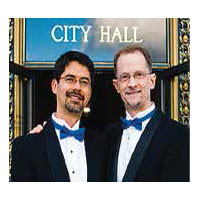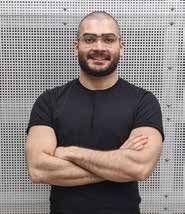
By John Lewis–
Every so often, you meet someone who changes the way you look at the world. One such a person for me is the highly acclaimed and sought-after industrial designer Emin Demirci.
An industrial designer is the person who oversees the entire process of an idea becoming reality in terms of the products we use in our daily lives—all the way from conception to development to production to marketing and distribution. Demirci explains that an industrial designer must have “keen insight into human nature and needs and the capacity to envision what people and the planet will need in the future. They must be extremely literate in multiple complex technologies and have a refined eye for beauty and aesthetics. It’s the ultimate polymath job.”
Demirci himself is the ultimate polymath. He’s a rare person who possesses exceptional intelligence, an extraordinary breadth of interests and curiosity, strategic vision and circumspection—and a heart of gold. What impresses me most about Demirci is his deep concern for the suffering of others and his ability to draw upon his wide-ranging talents to do something tangible about it.
Nowhere is Demirci’s vision more evident than his pathbreaking design concept Vald, a device to provide life-saving oxygen to coal miners trapped underground when a mine collapses and a massive gas explosion and fire ensue. The horrific mining disasters in Utah, West Virginia, and his native Turkey that killed over 300 miners deeply disturbed Demirci. Under existing protocols, “miners are expected just to run out of the mine as fast as they can or escape to sealed ‘refuge chambers,’ where they can survive for up to a week. But many miners can’t do so in time, leaving them trapped underground for as long as 20 hours until the fire burns itself out. And they carry only an hour’s worth of oxygen on them. It must be the worst feeling to be left alone gasping for air to survive.”
Demirci created an ingenious mobile oxygen delivery system that provides stranded miners oxygen for 24 hours and thus greatly increases their chance for survival. He combined the way astronauts aboard the International Space Station maintain their oxygen supply with a very sophisticated technology developed by the USC Loker Hydrocarbon Research Institute for a completely different purpose. “I encountered numerous failures along the way and many experts in electrochemistry said it just wasn’t possible. But I said to myself, ‘This has to happen,’ and I kept pushing to figure out a way.”
Not surprisingly, Vald won the first place Platinum Award at the Spark! Design Awards, was runner up for the Core77 Design Awards, a finalist for the Industrial Designers Society of America (IDSA) IDEA awards, and Fast Company’s World Changing awards, and has been discussed at numerous health and safety conferences.

Another design concept epitomizing Demirci’s vision is Q, an innovative wearable device and interface to help people with profound hearing impairment. Q also won prestigious awards from Spark!, IDSA, and Fast Company, and received a highly coveted grant from VentureWell, a nonprofit organization that funds only the highest quality designs that provide significant social benefit.
Demirci conceived Q because he saw first-hand how difficult it was for a colleague with severe hearing loss to communicate effectively and “how ancient” her equipment was. “I asked her if she’d like to collaborate with me to design something better. I said together we could do something great.”
They addressed the problem that voice captioning devices do not enable a hearing-impaired person to understand a speaker’s intonation and their emotions as they speak, leading to frequent miscommunications—and sometimes hearing people disengaging from contact with hearing-impaired people altogether.
Demirci and his colleague’s design uses sophisticated technology to provide hearing-impaired people graphic imagery and/or idiosyncratic vibrations that reveal the speaker’s emotions and intonations, and enable a hearing-impaired person to become aware of up to 25 phonetic sounds they cannot hear.
Another life-changing design Demirci created was for a leading developer of DNA and genomics research technologies, whose products “lie at the very forefront of human development.” He transformed their existing “ugly and ordinary” looking machinery into a modern totemic device, using very special hues of light that give the appearance of levitation to reflect the mind-boggling DNA sequencing and analysis the machinery does. The design so greatly improved users’ attitudes toward their work that it changed the company’s entire branding philosophy.
Demirici’s designs lie at the cutting edge of technological and societal development. His current project Rimpski represents an entirely new way of using augmented reality. Rimpski takes virtual reality glasses and other wearables and reverses their purpose from altering the way we see the outside world to enabling us to transform the way the outside world sees us. It employs sophisticated visual technologies we can wear to allow us to express ourselves physically in myriad different ways—and thus experiment with and present to the world all sorts of creative and life-affirming images of who we are.
The COVID-19 pandemic has been a profound wake-up call for Demirci to maintain his vision of industrial design. “It caused me to stop and think about what matters from now on.” In the pre-pandemic “fast consumption” economy, “companies constantly launched new products that regularly needed upgrade and replacement and fed people’s hunger for the latest new thing. As a society, I think we knew deep down we could consume less and that our environment cannot sustain continued proliferation of products that quickly end up in the trash heap. The pandemic forces us to recognize these truths. From now on, I want to focus my designs on what’s valuable, what’s durable—what’s long lasting.”
As an industrial designer, Demirci does not just muse or fantasize about change; he comes up with “tangible solutions” that can actually be implemented. “When millions of people purchase a product I design, I will never know who exactly uses it or touches it, but I hope they sense something in it— my love, my ideas, my vision to make their lives better.”
Emin Demirci is a genius of both the mind and heart.
John Lewis and Stuart Gaffney, together for over three decades, were plaintiffs in the California case for equal marriage rights decided by the California Supreme Court in 2008. Their leadership in the grassroots organization Marriage Equality USA contributed in 2015 to making same-sex marriage legal nationwide.
Published on May 7, 2020
Recent Comments